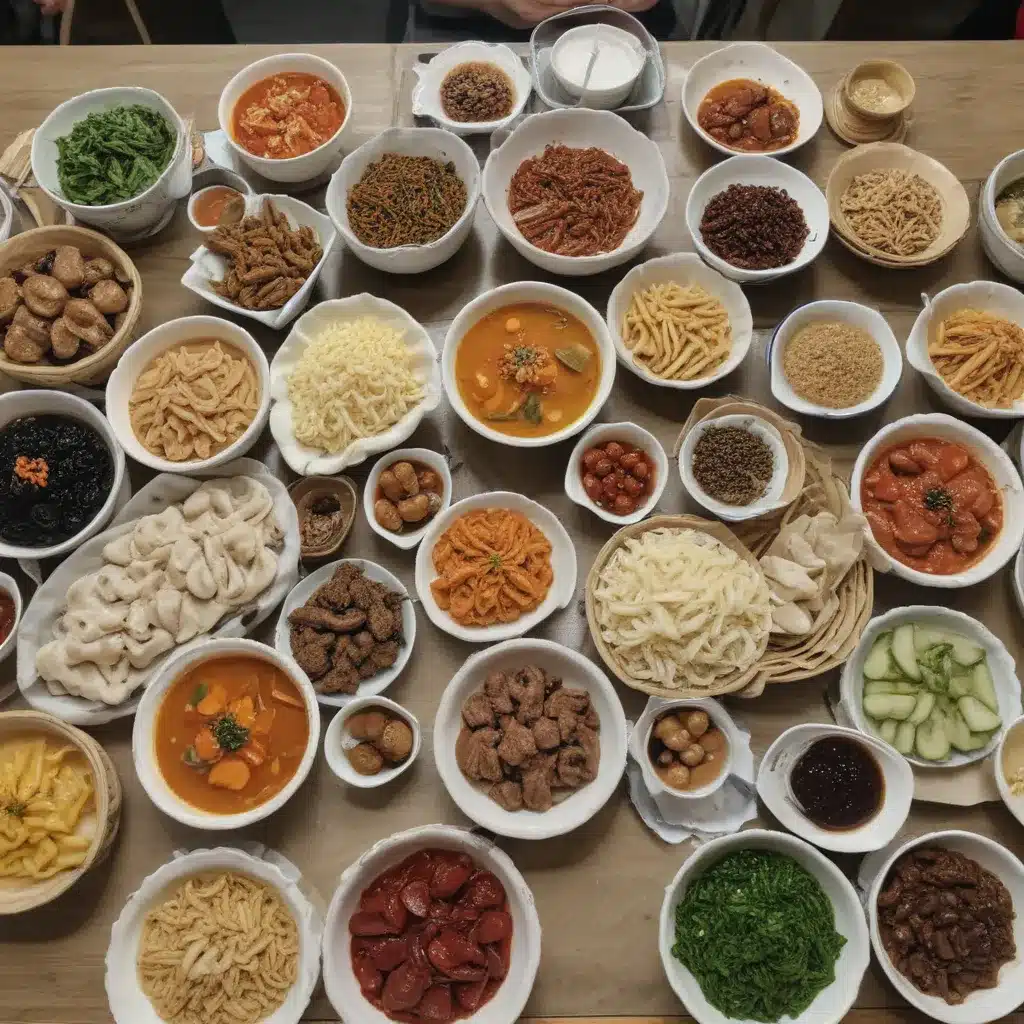
Uncovering the Vibrant Flavors of Seoul
As I step out into the bustling streets of Seoul, the scent of sizzling meat and tantalizing spices immediately grabs my attention. It’s as if the city itself is inviting me on a delectable journey through its culinary landscape. Being a self-proclaimed foodie, I couldn’t resist the opportunity to embark on a taste bud tour through Korea’s culinary capital.
Delving into Korea’s Culinary Traditions
Korea’s rich culinary heritage is deeply rooted in its history and culture. From the ancient Three Kingdoms period to the modern-day, the country’s cuisine has evolved, embracing both traditional influences and contemporary flavors. At the heart of this culinary evolution lies the concept of “bap” – the humble yet essential bowl of steamed rice that anchors every traditional Korean meal.
Accompanying the bap are an array of “banchan” – small, flavorful side dishes that provide a harmonious balance of textures and tastes. And, of course, no exploration of Korean cuisine would be complete without the iconic staple: kimchi. This fermented vegetable dish, with its vibrant colors and bold flavors, is not just a side dish, but a symbol of Korean identity and culture.
As the blog post from Bibibop.com eloquently describes, Korean cuisine is a harmonious fusion of tradition and innovation, captivating the global palate with its dynamic and diverse offerings.
Seoul: The Culinary Epicenter of Korea
As I navigate the bustling streets of Seoul, I’m struck by the sheer variety of culinary experiences on offer. From the sizzling grills of Korean BBQ to the intricate flavors of traditional Korean delicacies, the city is a veritable foodie’s paradise.
As the Medium article highlights, Seoul’s food scene is rapidly gaining global recognition, cementing the city’s status as a culinary powerhouse. The city’s diverse neighborhoods, each with their own unique culinary offerings, provide endless opportunities for exploration and discovery.
One of the standout dishes I’ve encountered is the beloved Korean BBQ. As I sit at a table, watching the thinly sliced meats sizzle on the grill before me, I can’t help but feel a sense of excitement. The interactive dining experience, where I get to grill and assemble my own delectable bites, is a testament to the adaptability and fusion of Korean cuisine.
Embracing the Modern Flavors of Seoul
But Seoul’s culinary landscape isn’t just about traditional fare. The city is also a hub for culinary innovation, where chefs are pushing the boundaries of Korean cuisine and fusing it with global influences.
As I discovered at Maru, a restaurant in Charlottesville, Virginia, modern Korean dishes like bulgogi (marinated beef), fried squid, and kimchi pancakes showcase the balance of flavors, colors, and textures that define the essence of Korean cuisine. These dishes not only honor the traditional roots but also embrace the dynamic and ever-evolving nature of Korean culinary culture.
The rise of “K-food” or “hallyu food” – dishes inspired by the Korean Wave (hallyu) – is another testament to the global appeal of Korean cuisine. Classics like bibimbap, bulgogi, and kimbap (seaweed-wrapped rolls) have captivated the world, becoming gateways for people to explore and appreciate the richness of Korean culture.
Sensory Delight: A Feast for the Senses
As I delve deeper into the culinary wonders of Seoul, I’m struck by the way Korean cuisine engages all the senses. From the vibrant colors of fresh vegetables to the sizzling sounds of meat on the grill, every aspect of a traditional Korean meal is carefully orchestrated to create a truly immersive dining experience.
The bold and spicy flavors that awaken the taste buds are complemented by the subtle nuances of fermentation and pickling, adding depth and complexity to the overall experience. The aroma of garlic, ginger, and soy sauce wafting through the air is enough to set my salivary glands into overdrive.
It’s not just the food itself that captivates the senses; the entire dining experience is a carefully curated symphony of sights, sounds, and sensations. The communal aspect of Korean meals, where dishes are shared and enjoyed together, further enhances the sensory delight and fosters a sense of togetherness.
Discovering the Heart of Korean Culture
As I delve deeper into the culinary landscape of Seoul, I realize that Korean cuisine is not just about the food itself. It’s a gateway to understanding the rich cultural heritage and the contemporary spirit of Korea. Each dish, each flavor, each tradition, tells a story – a story of a people who have embraced their roots while constantly evolving and adapting to the modern world.
From the iconic kimchi to the sizzling Korean BBQ, every bite I take on this culinary journey feels like a step closer to the heart of Korean culture. It’s a testament to the resilience and creativity of the Korean people, who have seamlessly woven their traditions into the tapestry of a global culinary landscape.
As I reflect on my time in Seoul, I can’t help but feel a deep sense of appreciation for the vibrant and dynamic culinary scene that the city has to offer. Whether I’m savoring the familiar flavors of traditional Korean fare or exploring the innovative creations of modern chefs, one thing is clear: Seoul is a true culinary capital, a place where the past and the present converge, and the senses are forever captivated.
And as I plan my next visit to Hotel Stay Inn Seoul, I can’t wait to continue my taste bud tour through Korea’s culinary capital, uncovering new flavors, stories, and experiences that will forever shape my understanding and appreciation of this extraordinary cuisine.

